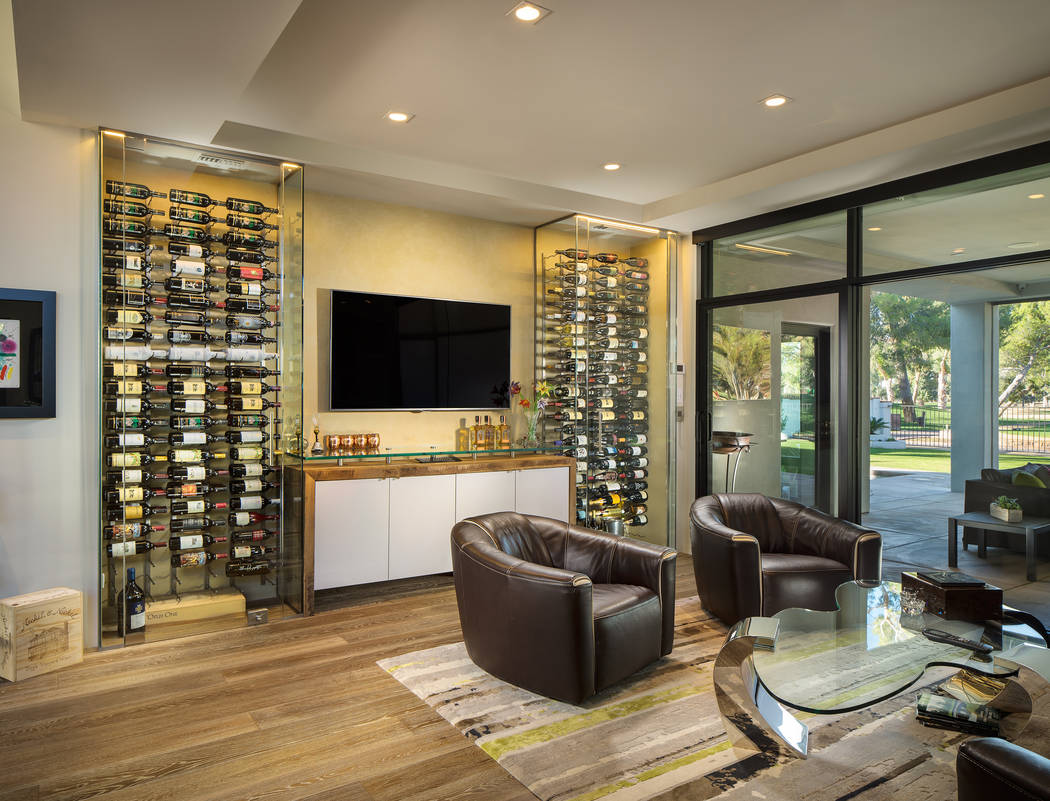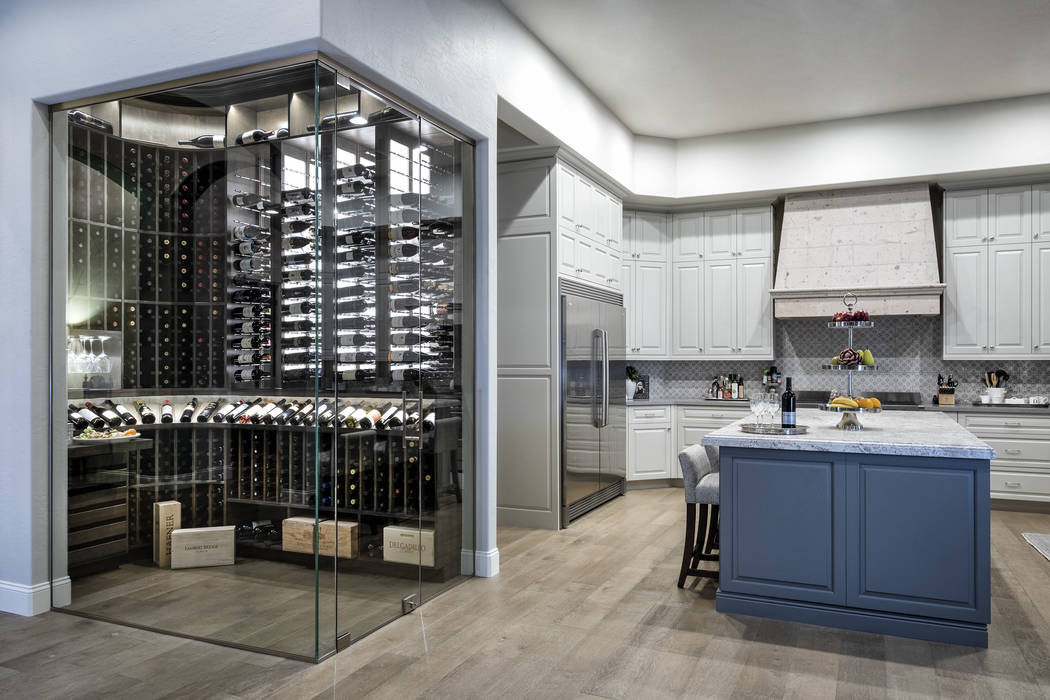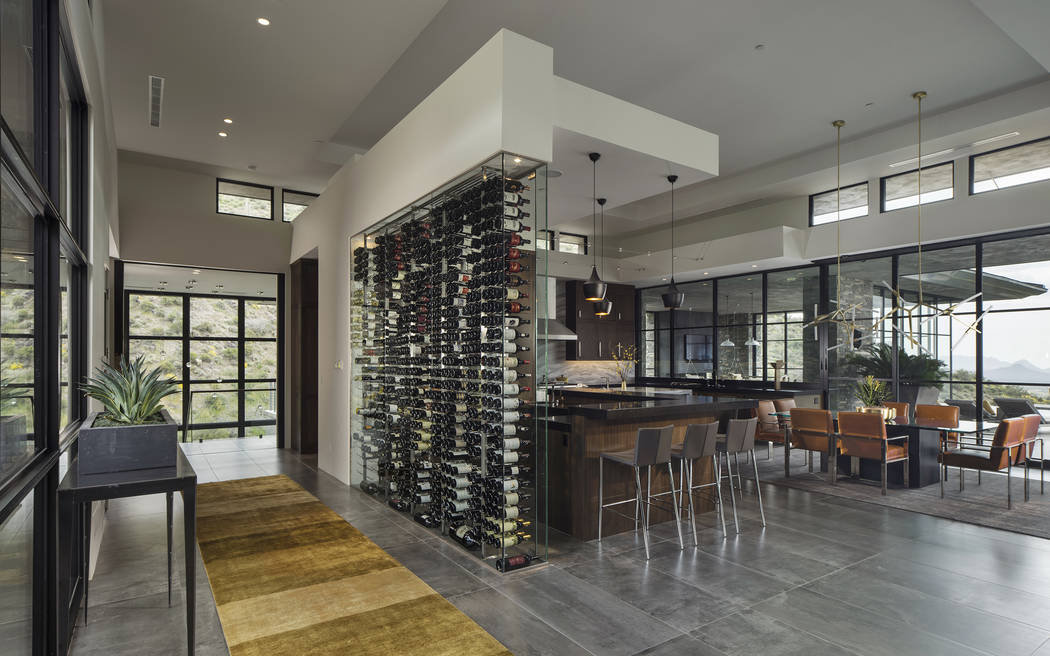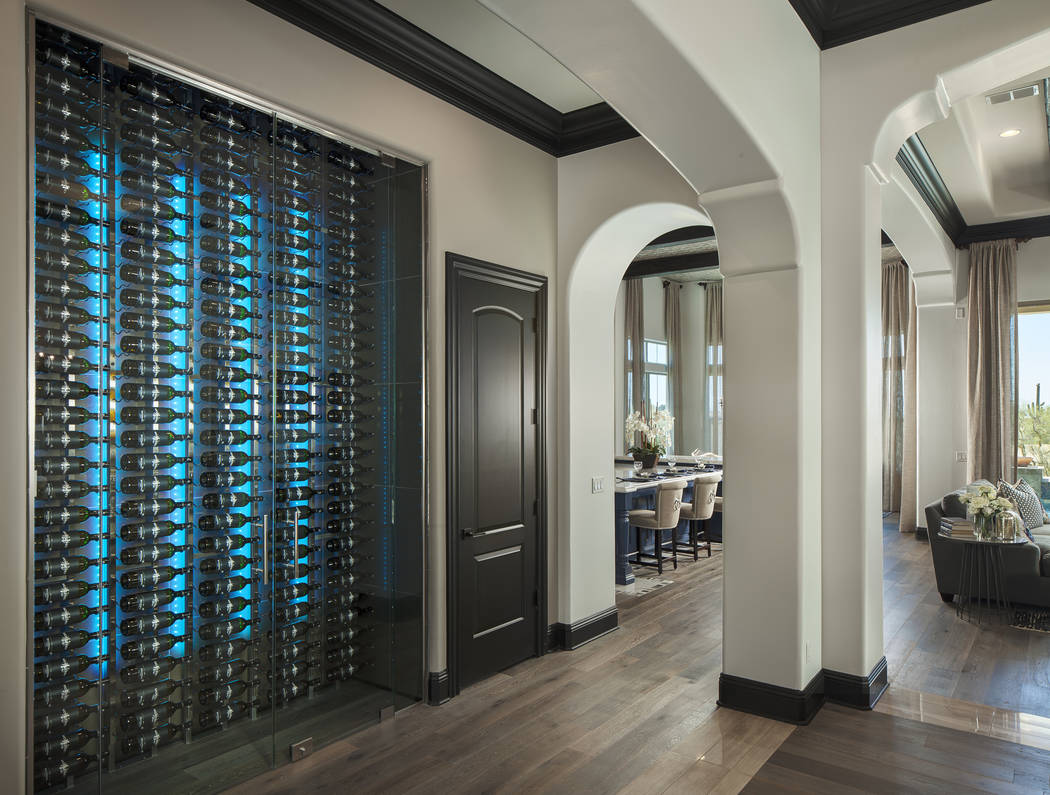Today’s home wine cellars embrace modern design trends
Long ago, homeowners who were also wine enthusiasts had to simply make do with their basic home environment when it came to storing their cherished collections. They didn’t have that perfect climate set at a consistent 55 degrees and 55 to 70 percent humidity to allow their wine to age well.
However, in the past few decades, in-home wine cellars have grown in popularity, and they’re not in the cellar. Now, enthusiasts can house and display all their vintages, regardless of whether they have a few dozen or a few thousand bottles.
For years, when it came to wine room design, replicating Old World cavelike environments was the norm. In the past five years, however, wine storage design has taken a page from contemporary interior design, creating unique spaces that can be found in just about any area of a home.
“When I started in the industry, the vast majority of customers wanted wood wine cellars for their homes,” said Tony Wilke, vice president of operations for Wine Cellar Innovations, a Cincinnati-based builder of wine storage rooms. “While there’s still a large market for wood wine cellars, what’s growing is the modern look where you’re integrating acrylic and metal.”
The modern touch
Today’s modern cellars will often incorporate acrylic racks to give bottles a floating look. Some will incorporate metal or steel racks as well. Today’s wine cellar customer also prefers to display wine in a “label out” fashion so that the bottle’s label can be clearly viewed without having to take it out of a rack.
“The focus is not so much wanting to fit as many bottles into a space as possible but more about creating a space that has a certain format to show many bottles. The focus is more on showcasing it,” Wilke said.
Sandy Horwitz, founder of Scottsdale, Arizona-based Innovative Wine Cellar Designs, which has built wine cellars for clients in Las Vegas, is also seeing the modern elements in his designs.
“It used to be this Tuscan Old World look, but now almost everything we’re doing in Scottsdale and Vegas is contemporary, so we’ve really developed multiple lines of contemporary wine racks,” he said.
The modern looks don’t mean Old World elements like wood and stone are completely out of the mix. There’s a shift toward integration of different materials in response to emerging transitional interior design styles, in which traditional elements combine with contemporary, said Richard Benson, owner of Wine Cellar Experts, which is also based in Scottsdale and has an office in Las Vegas.
For Benson, wood is as popular as ever in cellar design. It’s just being used to accent other materials, offering an aesthetic that doesn’t seek to abandon the Old World look and feel altogether as much as appropriately place it among a sleeker look. As a result, “you find that wine cellars today really add artistic value to the home,” he said.
Incorporating glass
Today’s wine cellar consumers are also gravitating toward glass enclosures. Some cellars may have a traditional overall design with lots of redwood or a lighter wood but a glass door to showcase the wine to give it a “storefront look,” according to Wilke.
“I’d say about 80 percent of the cellars we do now have glass enclosures,” Horwitz said.
Incorporating glass into wine cellar designs also brings flexibility with where a wine cellar can be built in the home. Today’s cellars don’t require a dedicated room. You’ll find them in a hallway, along a wall (called a “wine wall”) and in closet spaces, entryways, former powder rooms and bathrooms, you name it. Many will often still have wood as a backdrop and on the floor.
“There’s this misconception that you need a dedicated room. That’s not the case,” Horwitz said. “We can always find a space for one.”
Benson uses LED lighting in all of his cellars, another trend that is emerging with dedicated wine spaces. He said LED lights really help highlight the bottles.
Many homeowners also still prefer wood flooring inside cellars, Wilke said. Redwood is the most popular wood because it holds its shape well in humid environments, he added.
Practical considerations
If you’re considering a wine cellar in your home, it’s important to have a strong understanding of what’s really involved.
“It’s the most expensive square footage in the house,” Benson said, while explaining how refrigeration and numerous other considerations must be made with regard to the space and its ability to handle humidity and consistently cool temperature.
His team interviews clients extensively to gain an understanding of the type of wine collector involved while thoroughly examining the home for the best location, merging both the desires of the homeowner and the construction/design realities. Benson, Horwitz and Wilke highlight the following considerations everyone should understand before hiring someone to create a wine cellar in their home:
n Collection style. The type of collector tells Benson a lot. Someone with a large Old World European collection has a high volume of bottles with a very distinct bottle size compared with what may be traditionally seen on liquor store shelves. And someone who collects small 375-milliliter bottles has even more distinctive needs. This information influences the spacing of racks, how the bottles are best displayed and how many can actually be displayed, Benson said.
n You’re building a compact refrigerator. Since wine must be kept at 55 degrees, you are creating a refrigerated space separate from the refrigeration unit already in the home. No, you can’t tap your existing HVAC system, and an HVAC installer will be needed for the project. For energy efficiency, Benson likes to stay away from using rooms with walls that have a high thermal load or a western exposure.
n Lighting and insulation factors. Many homeowners will opt for IC can lights to illuminate the space. You have to make sure that whatever can light you use, it can have insulation around it. Otherwise there could be problems with mold, Wilke said. Like Benson, he, too, prefers surface-mounted LED light strips.
n Prepare for a home renovation. To build out the space, plan on a contractor tearing out drywall and replacing it with green board to handle the moisture and plenty of demo work, in general. The project is not a mere installation. It is more of a renovation.
n They’re not cheap. While you may be able to create some micro-spaces for $4,000 or $5,000, if you have a sizeable collection, plan on spending at least $20,000. Some custom home cellars cost hundreds of thousands of dollars.




















